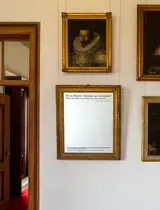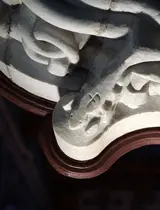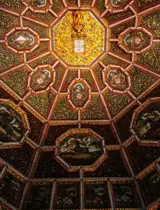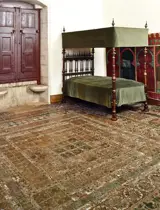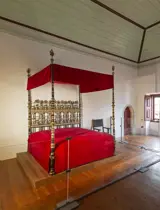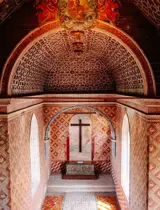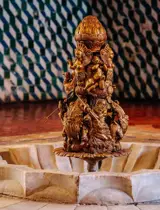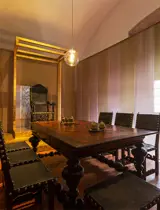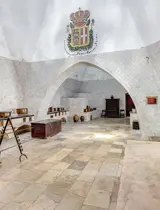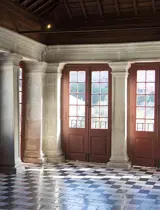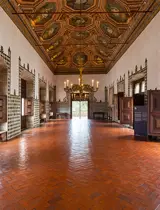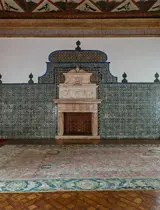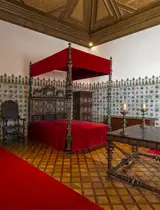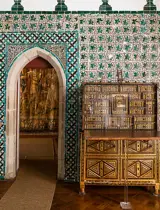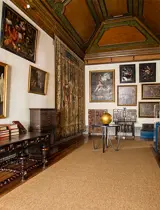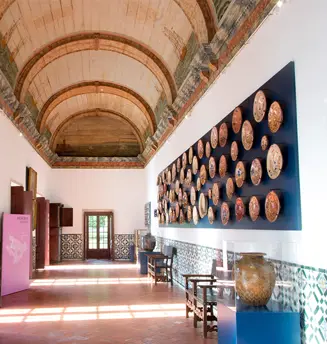
Galleys Room
Galleys Room
Built on the orders of King João III (1502-1557), this room, which may have been a gallery, connected his chambers to the northwest wing of the palace. It is possible that his grandson, King Sebastião, would have come here to take a nap and converse with his masters.
The ceiling, which shows Portuguese, Imperial Ottoman and Dutch galleys, dates from the 17th century and may have been intended to remember an important event. However, its meaning is no longer known.
Discover the objects on display in this room.
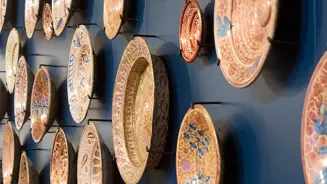
Ceramics
Pieces produced in the region of Valencia, in Spain, from the 15th to 18th centuries. Their creators are unknown today.
Most were collected by King Fernando II (1816–1885) and were originally displayed in the Palace of Pena. At the time, they were regarded as quintessentially Portuguese, whose culture was seen as the positive outcome of the encounter between various cultures. In this case, between Christianity and Islam.
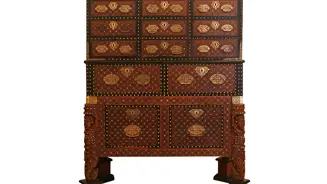
Cabinet
- India, 18th century
- Teak, ebony, rosewood, ivory, brass and copper
- Inv. No. PNS3070
This Indo-Portuguese cabinet, produced in the 17th or 18th centuries, exhibits a geometric decoration in inlaied ivory. For a long time, the figures on such cabinet's legs were interpreted as representing Nagini, half-human, half-serpent deities of Hindu, Buddhist and Jain religions. These figures are, however, half human, half fish. Contrary to the previous general conception, couldn't they simply represent mermaids?
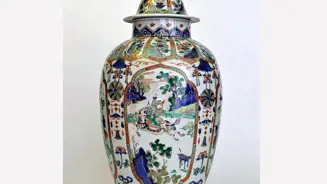
Pot
- China
- Qing Dynasty - Kangxi reign (1662-1722)
- Porcelain
- Inv. No. PNS110
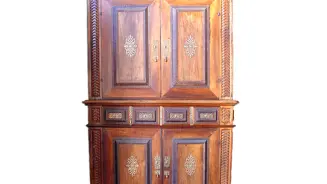
Cupboard
- Portugal, 17th-18th century
- Wood (mahogany?) and gilded metal
- Inv. No. PNS3110

Battle Scene
- Georg Philipp Rugendas (attrib.)
- Germany, 17th-18th century
- Oil on canvas
- Inv. No. PNS3630
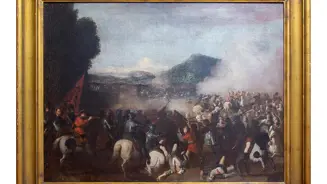
Battle against Turks
- Georg Philipp Rugendas (attrib.)
- Germany, 17th-18th century
- Oil on canvas
- Inv. No. PNS3631
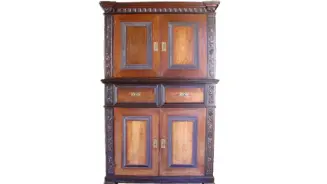
Cupboard
- Portugal, 17th century
- Rosewood and gilded metal
- Inv. No. PNS3096
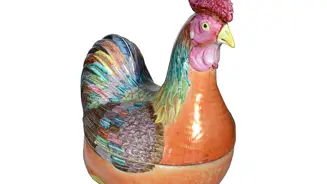
Tureen
- China
- Qing Dynasty - Qianlong reign (1770-1780)
- Porcelain
- Inv. No. PNS54
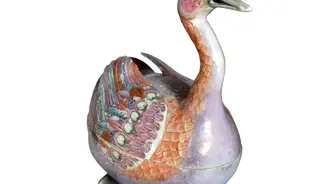
Tureen
- China
- Qing Dynasty - Qianlong reign (1736-1795)
- Porcelain
- Inv. No. PNS61
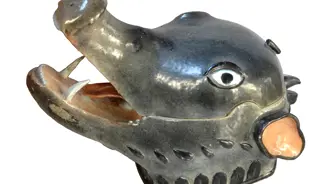
Tureen
- China
- Qing Dynasty - Qianlong reign (c.1760)
- Porcelain
- Inv. No. PNS60
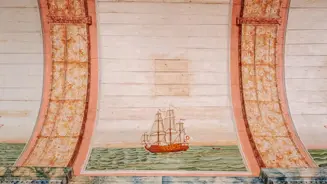
Ceiling
This room owes its name to the galleys flying the ensigns of Portugal, the Ottoman Empire and the Netherlands painted on the ceiling. Hidden by a false ceiling in the 19th century, the painting was brought out of the shadows in the following century. However, its original meaning is now no longer known.


